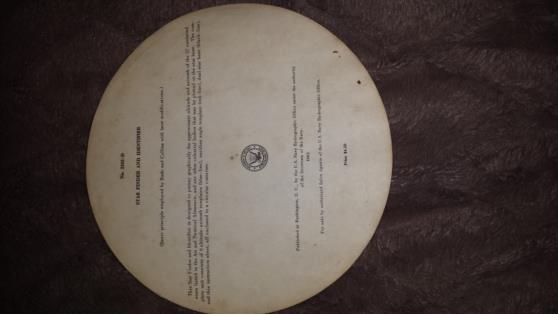
NavList:
A Community Devoted to the Preservation and Practice of Celestial Navigation and Other Methods of Traditional Wayfinding
Re: Star finder tip: subtract one degree
From: Brad Morris
Date: 2017 Jan 29, 20:23 -0500
From: Brad Morris
Date: 2017 Jan 29, 20:23 -0500
Hello Frank
You wrote
What a strange thing to say. We've been talking about the many flaws of the 2102-D star finder for years (and indeed, I just described another flaw in my earlier post). How is it that "now" you understand my antipathy? Please do explain what you're imagining
#####
When a person states that if they could only improve the device, it would be able to any number of magical things; that doesn't mean it has a flaw. A flaw is when the device won't do what it is designed to do.
The 2012D does what it designed to to, to a T.
The 2102Ds designed to portray graphically the approximate [verbatim from the instructions: approximate ] altitude and azimuth of the 57 numbered navigational stars and any other bodies that may be plotted.
The instructions have these headings
1) Find or identify Celestial Bodies
2) To plot sun, moon, planets or additional stars
3) To determine meridian angle
In not one place can I find where I can sum Right Ascension (whose units are hours, minutes seconds) on a device which is demarcated in degrees with a resolution of 1/2 degree. That isn't a flaw, it's simply not designed to do it. Its not in the directions, it was never the intention of the designer.
For example, suppose a user wanted to find the square root of seven. This darned 2102D just won't do it, what a piece of junk. That's a huge flaw. Is that a flaw or is it trying to make the device do something it wasn't designed for.
If you can identify an actual flaw, when using the device as designed, I would be very receptive to listening to and understanding your point.
When you tell me the device is flawed because it won't do something or was never designed to do, that isn't a flaw, that's an improvement. Improvements are great, and I commend you on your effort. Seriously I do. Make a fabulous starfinder, that slices bread, performs trigonometry, finds the time of sunrise and sunset, and on and on!
However, you stated that NavList is filled with complaints of the flaws. Er, no. NavList is filled with recommended improvements. From Gary, to Byron and many others who have asked for more than the original design intention. I agree, there are many of those. But in fact, I can't think of one instance where the device does not perform as intended.
I've included the COMPLETE set of directions for your reference. Perhaps I am confused, where do the instructions tell me how to sum RA? Well, they don't. QED, no flaw can be attributed to the device.
And yes, now I understand your antipathy.
Brad
On Jan 29, 2017 7:34 PM, "Frank Reed" <NoReply_FrankReed@fer3.com> wrote:
Brad, you wrote:
"Now I understand your antipathy towards the 2102D."What a strange thing to say. We've been talking about the many flaws of the 2102-D star finder for years (and indeed, I just described another flaw in my earlier post). How is it that "now" you understand my antipathy? Please do explain what you're imagining here.
Frank Reed
Attached File:









